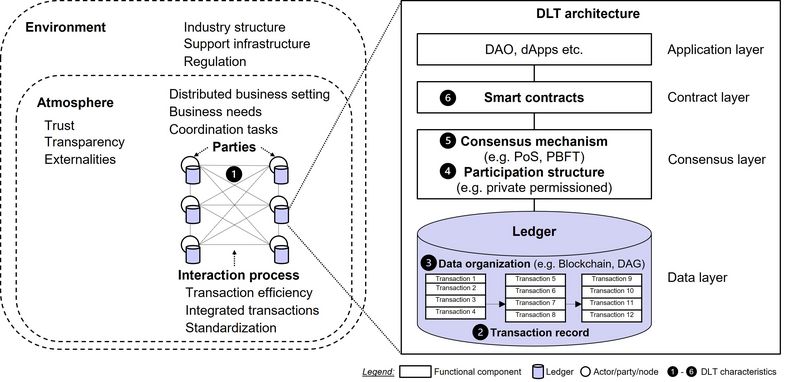What is the potential of the often hyped blockchain technologies, and in which business environments do these technologies offer added value? The Chair of Application Systems at the University of Leipzig has published a new article on distributed ledger technology (DLT) in the specialist journal Electronic Markets. The Fundamental entitled “Distributed Ledger Technology” by Prof. Dr. Rainer Alt and Max Gräser provides a structured, business informatics introduction to DLT systems and analyzes their potential and challenges, especially for cross-company application scenarios.
The focus is on
- A uniform definition of DLT beyond blockchain
- An overview of DLT generations and use cases
- An architecture model and an interaction model for DLT
- Concrete application examples and a systematic analysis of technical and organizational potential and challenges
The work provides a sound orientation framework for decision-makers and researchers to better assess the suitability of DLT.
Open Access publication: https://doi.org/10.1007/s12525-025-00784-w
Abstract: Distributed ledger technology (DLT) emerged as a disruptive force towards decentralization and has expanded beyond its origins in cryptocurrencies like Bitcoin. At the heart of DLT is an infrastructure that replicates data across multiple network nodes, enabling new opportunities for data integrity, transparency, and trust in distributed business environments. In recent years, technological advances have improved the performance, energy efficiency, and functionality of DLT, expanding its application to various sectors such as finance, healthcare, trade and media, logistics, and the public sector. Despite these advances, adoption remained limited, with notable successes primarily in areas such as decentralized finance and non-fungible tokens. By placing DLT within the historical development of ledgers and distributed databases, this Fundamental provides a business-oriented foundation for structuring and assessing DLT-based solutions. It presents, a unified definition covering blockchain technologies, describes the key characteristics of DLT, and offers a structured analysis of its potential and challenges using a multi-dimensional interaction framework. Ultimately, it serves to carve out where and under which conditions DLT infrastructures add value for interorganizational relationships.
